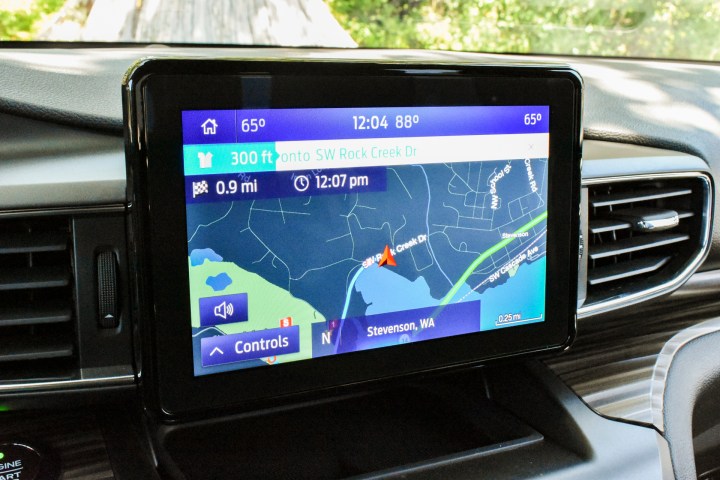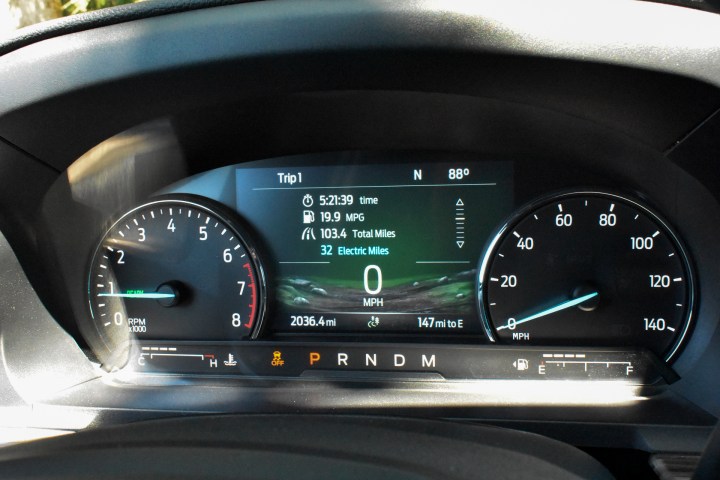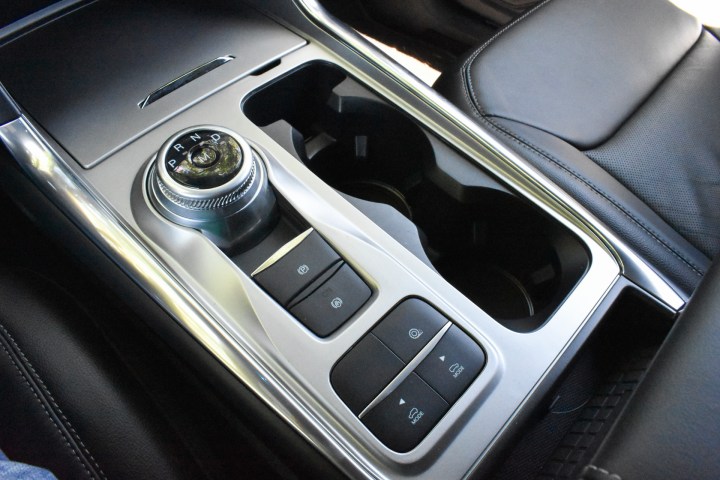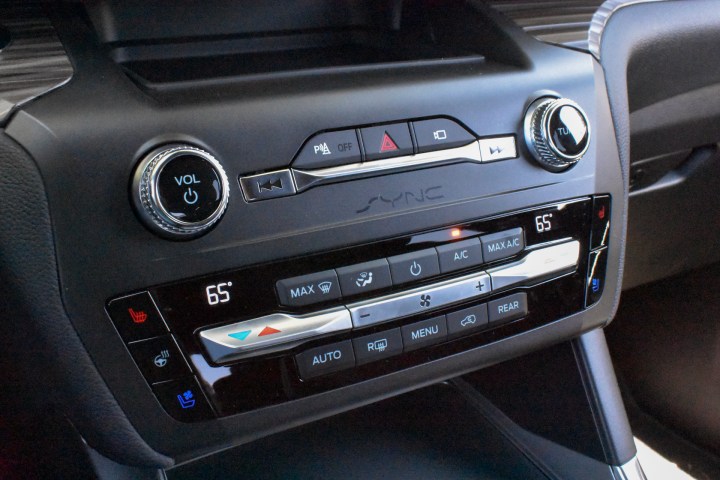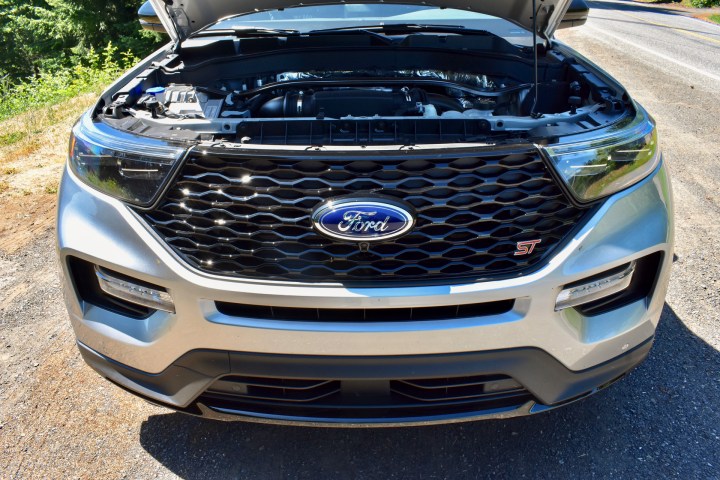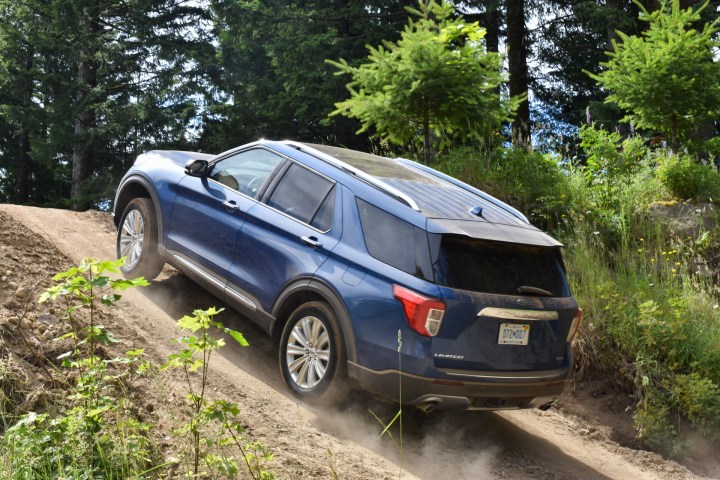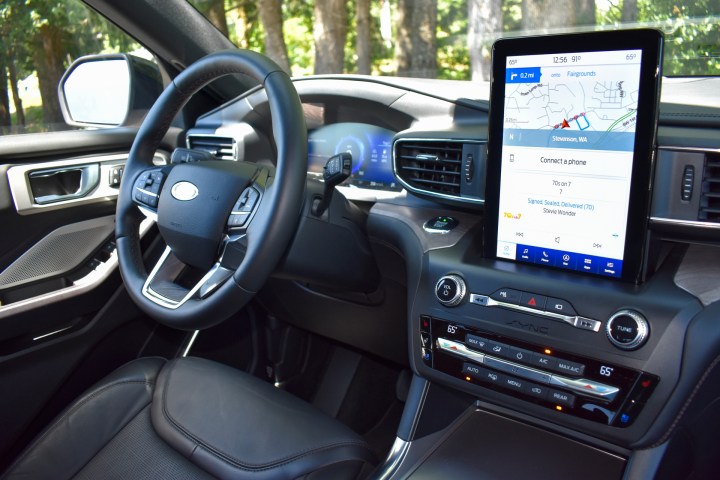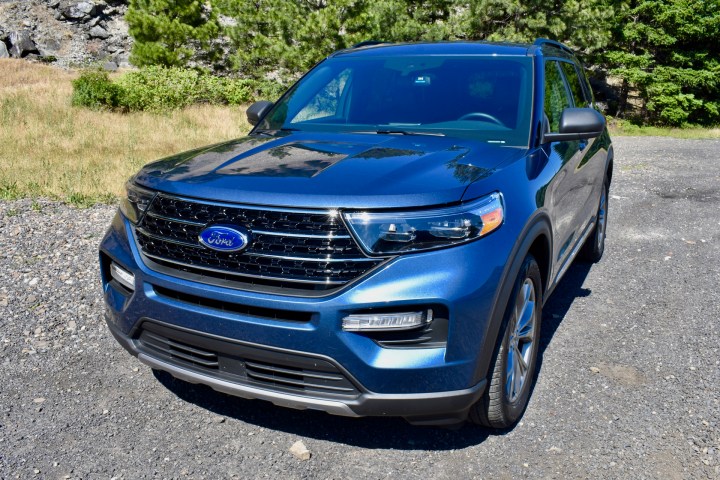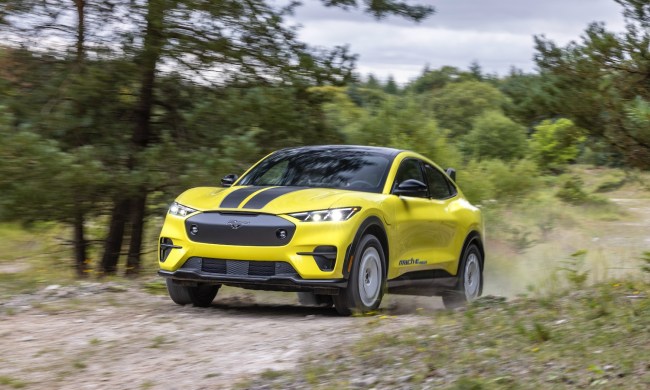“The 2020 Ford Explorer makes the most of a major overhaul, improving on all fronts.”
- Precise handling
- Great powertrain lineup
- Spacious interior
- Sync 3 usability
- Awkward touchscreen integration
- Half-baked ST model
The original Ford Explorer had a starring role in Jurassic Park, which is fitting, because it drove some automotive dinosaurs to the verge of extinction. The station wagon and minivan are nearly gone thanks largely to the Explorer and other vehicles like it.
It may be the killer asteroid of family cars, but the Explorer must now fight harder than ever to stay on top. Ford’s midsize SUV faces more competition than ever before, so the Blue Oval threw everything it had at the redesigned 2020 Explorer. Engineers started with a fresh rear-wheel drive platform, added more tech, as well as throwing in a hybrid option and a sporty ST model packing a hearty 400 horsepower.
That adds up to a pretty significant overhaul, but does it make the 2020 Ford Explorer a match for its numerous competitors? To find out, Digital Trends decamped to Stevenson, Washington, where Ford invited us to spend two days driving the new Explorer in its many different forms.
The 2020 Explorer trim levels we sampled included an XLT (base price: $37,470), which will likely be the biggest seller. We also tested a hybrid, which starts at $53,375, as well as the ST (base price: $55,835) and a range-topping Platinum model (base price: $59,345). All prices include a mandatory $1,095 destination charge.
Don’t judge a book by its cover
The most important change on the 2020 Ford Explorer is what you can’t see. The Explorer is based on a new rear-wheel drive platform, marking a major shift from the previous generation’s front-wheel drive architecture. While the vast majority of Explorers sold will likely still be all-wheel drive, starting with rear-wheel drive provided an inherent advantage in on-road handling. Because engineers were working from a clean sheet, they also had more opportunities to increase refinement than if they were repurposing an existing platform.
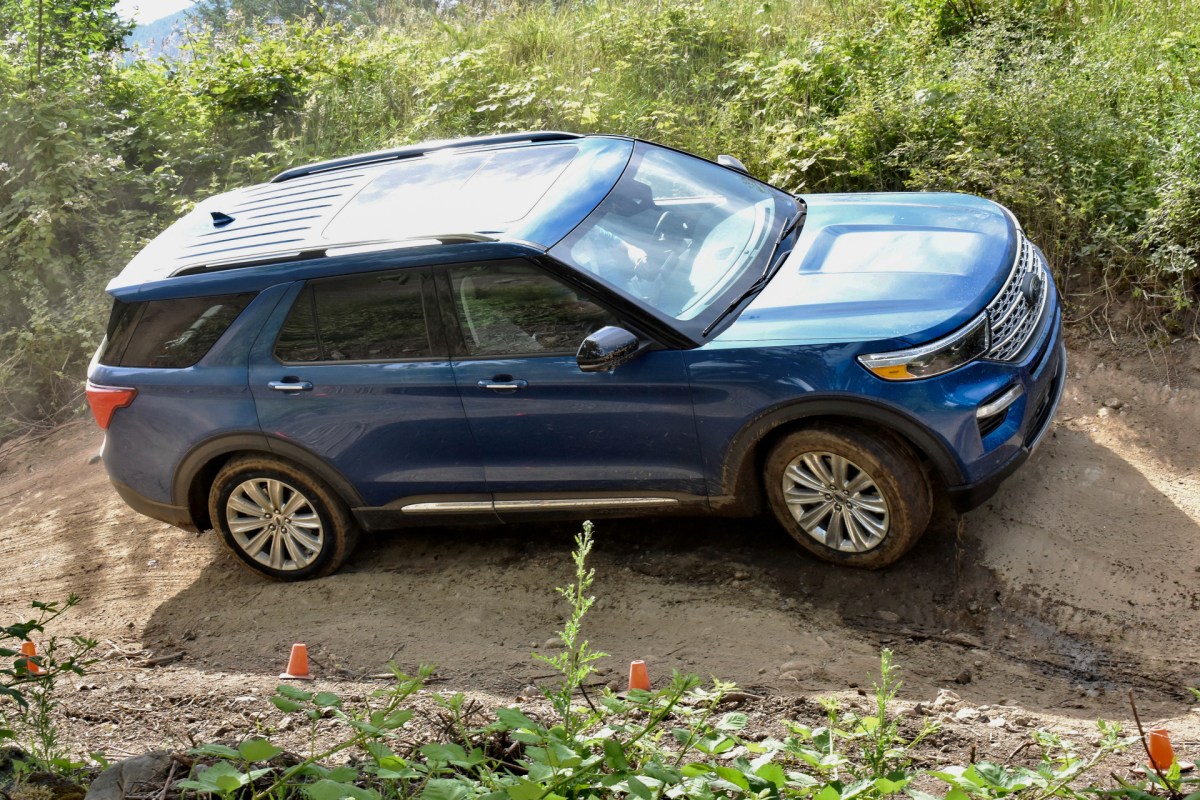
On the outside, the changes aren’t as radical. The 2020 Explorer adopts a cab-rearward silhouette (another benefit of that rear-wheel drive platform), making it look a bit more like the boxy 1990s original. But everything else is more an evolution of the previous-generation Explorer’s exterior styling than a complete rethink. Ford seems to have put in more effort elsewhere.
SUVs are all about hauling people and stuff, so it’s probably fitting that the interior got a more thorough overhaul than the exterior. The dashboard has a horizontal layout, which looks good, but meant designers had to leave the infotainment screens awkwardly jutting out of the top of the dash. The Explorer also gets the rotary shift knob seen in other recent Fords, freeing up more space on the center console for storage. In our time inside, the Interior materials didn’t look particularly fancy, but seemed like they could stand up to a lot of abuse. That was fine in the lower-level XLT, but we would have liked to see more of an upgrade in the Platinum, given its nearly $60,000 base price.
As part of the interior overhaul, the 2020 Ford Explorer gets two notable pieces of techy eye candy.
Ford used its own in-house expert – nicknamed “Dr. Derriere” – to design front seats for the 2020 Explorer, and the good doctor lived up to his name. The seats were very comfortable, but still provided adequate support where it was needed. Ford claims the slimmer design of the front seats frees up second-row space, something we’re inclined to believe given how roomy it felt back there. However, we wished the ST’s seats had more side bolstering, given that model’s sportier character. In general, we felt Ford could have done more to distinguish the ST’s interior from the other Explorer models.
The 2020 Explorer is available in six-seat or seven-seat configurations. Six-seat versions have captain’s chairs in the second row, while seven-seat models have a second-row bench that adds a middle seat. With maximum passenger volume of 152.7 cubic feet (146.8 cubic feet for Platinum models), the Explorer is more spacious than the Honda Pilot, but slightly behind the Subaru Ascent, Kia Sorento, Nissan Pathfinder, Chevrolet Traverse, and Volkswagen Atlas.
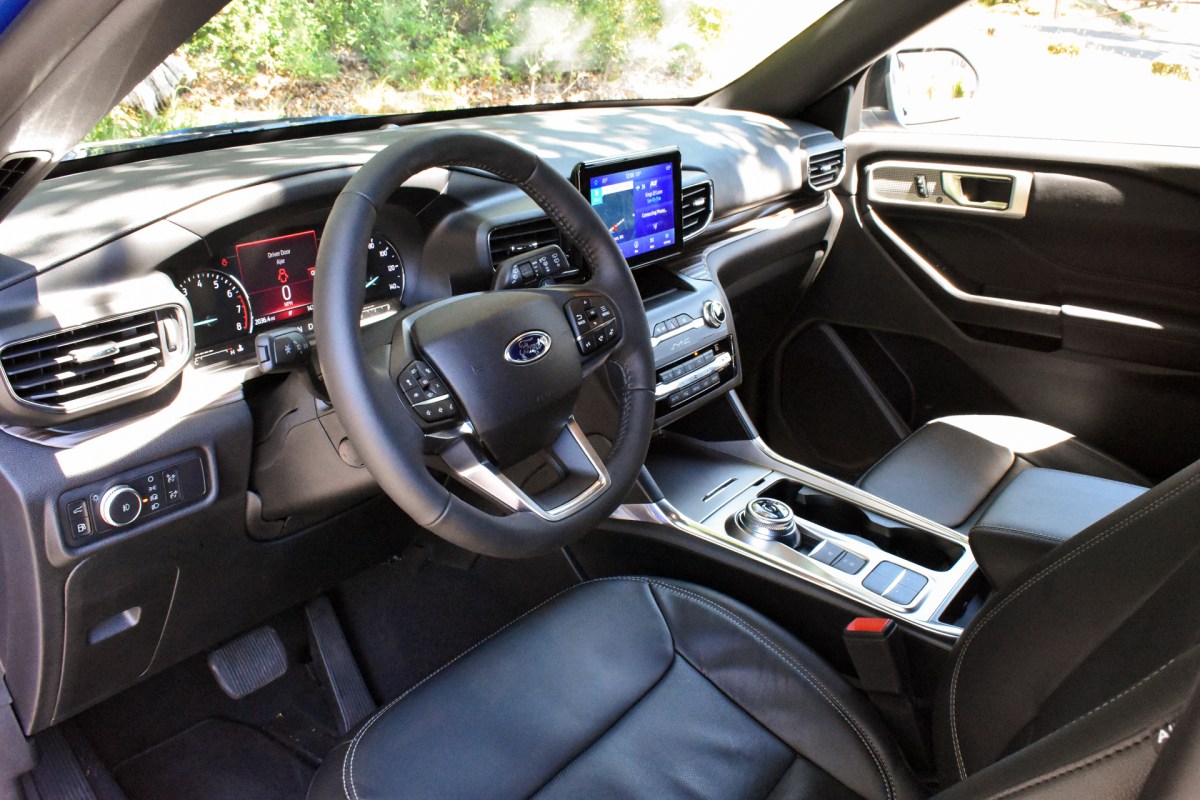
At 18.2 cubic feet, 47.9 cubic feet, 87.8 cubic feet behind the first, second, and third rows, respectively, cargo space is fairly competitive for the segment. Ford also offers power-folding second and third-row seats as optional extras. However, the Chevrolet Traverse and Volkswagen Atlas offer more space for your stuff.
Flashy, but only partly functional
As part of the interior overhaul, the 2020 Ford Explorer gets two notable pieces of techy eye candy. An optional 10.1-inch portrait-oriented touchscreen juts up from the dashboard, looking like designers simply glued an iPad to the top of the dash and called it a day.
What it lacks in aesthetic appeal, the screen makes up in functionality. The Explorer features Ford’s familiar Sync 3 infotainment system, which is as easy to use as ever. The screen’s graphics are clear and easy to read, although we couldn’t find a specific advantage to the portrait configuration.
The Ford will be the first SUV available with Michelin Selfseal tires, which feature a cured-rubber lining designed to seal around punctures.
Lower-level models get an 8.0-inch, landscape-oriented touchscreen, that isn’t very well integrated into the dash either. Apple CarPlay, Android Auto, and a built-in 4G LTE WiFi hotspot are standard across the board. A wireless charging pad and up to 4 USB ports are available.
The other notable new piece of interior tech is the 12.3-inch digital instrument cluster. Ford is far from the first automaker to swap out analog gauges for a digital display, and the cluster is an optional extra, but it’s a fairly effective use of tech. It features a “mindful mode” that eliminates unnecessary information, helping to cut down on distractions. Granted, eliminating screens altogether would be an even better way to deal with distraction. We also liked the animations for the different drive modes (seemingly influenced by the Lincoln Navigator), although they were a bit slow to load.
Speaking of drive modes, the 2020 Explorer has no less than seven of them. Drivers can choose from Normal, Eco, Sport, Tow/Haul, Slippery, Deep snow/Sand, and Trail. The rough-terrain modes help give the Explorer some genuine off-road capability, but we didn’t see much difference between Normal, Eco, and Sport on the pavement. In addition, Ford only lets you cycle through the list of drive modes in one direction, making it harder to quickly find the right one while driving.
The 2020 Explorer comes standard with autonomous emergency braking, blind spot monitoring, lane keep assist, and automatic high beams as standard equipment under the Co-Pilot360 umbrella. Adaptive cruise control and a surround-view camera system are available as optional extras. Other extras include evasive steering assist (adds steering boost to make emergency maneuvers easier) and post-impact braking, which automatically applies the brakes after a crash to prevent the car from rolling. Ford also offers a park-assist system that can back the Explorer into parallel or perpendicular spaces without the driver having to touch the steering wheel or pedals.
Not all of the Explorer’s safety tech is digital, though. The Ford will be the first SUV available with Michelin Selfseal tires, which feature a cured-rubber lining designed to seal around punctures. The sealant is not a permanent fix, but it will slow the rate of air loss so drivers can get safely off the road, according to Ford and Michelin. The tires are only available on Limited and Platinum trim levels.
Plenty of choices
The 2020 Ford Explorer offers more powertrain options than most other midsize family SUVs, including some unexpected choices. As with the previous-generation Explorer, the 2020 model gets a 2.3-liter turbocharged inline-four shared with the Ranger and Mustang. You wouldn’t normally expect a four-cylinder engine to be up to the task of moving over 4,000 pounds of SUV, but with 300 hp and 310 pound-feet of torque on tap, the this engine was more than up to the task. When accelerating away from a stop or overtaking other cars, it felt like there was an extra pair of cylinders under the hood.
On a short off-road course set up by Ford, we got through a foot of water without frying anything.
Platinum models get a 3.0-liter twin-turbocharged V6, making 365 hp and 380 lb-ft of torque. While we appreciated the extra power, the difference didn’t feel as dramatic as the numbers might suggest. All gasoline Explorer models use the same 10-speed automatic transmission, which faultlessly juggled gears regardless of the engine it was connected to. The effect of the rear-wheel drive platform was also noticeable, giving the Explorer a precise handling feel that makes the old model feel hopelessly clumsy by comparison.
This all created high expectations for the Explorer ST. This is the first time Ford has applied its ST performance badge, which was previously used on sports sedans and hot hatchbacks, to the Explorer. That may upset purists, but on paper the Explorer ST generates some pretty impressive numbers. It uses the same 3.0-liter twin-turbo V6 as the Explorer Platinum, but tuned to 400 hp and 415 lb-ft of torque. Ford claims the Explorer ST will do zero to 60 mph in 5.5 seconds, and reach a top speed of 143 mph. That beats a V6 Land Rover Range Rover Sport, although the British SUV offers a greater breadth of performance than the Ford.
The ST just can’t capitalize on its powerful engine and well-balanced chassis. Even in sport mode, the ST doesn’t feel appreciably more nimble than other Explorer variants. It never gives the driver enough confidence to exploit that extra power. The ST isn’t a complete performance vehicle; it’s just an Explorer with a more powerful engine. Its straight-line performance is impressive, but if that’s all you care about, you need to take a look at the Dodge Durango SRT.
On the other end of the spectrum, the 2020 Explorer is also available with a hybrid powertrain for the first time. It combines a 3.3-liter V6 with Ford’s new modular hybrid system, which basically wedges an electric motor ahead of the 10-speed automatic transmission used in other Explorer variants. Total system output is 318 hp and 322 lb-ft of torque; EPA fuel-economy ratings are not available at this time. To be worth the money, the hybrid will have to beat the four-cylinder Explorer, which is rated at 24 mpg combined (21 mpg city, 28 mpg highway) with rear-wheel drive. All-wheel drive whittles away 1 mpg in each category.
While fuel economy remains an unknown, we found other impressive features on the Explorer hybrid. For one, it doesn’t feel like a hybrid. It drives just like any other car. That’s partly down to Ford’s use of a conventional geared transmission instead of a CVT, or a transmission-less setup like Honda’s hybrid system. But Ford’s engineers also deserve credit for fine-tuning the interplay of gasoline engine and electric motor.
Of the Explorer models we drove, the ST would be our pick.
Unlike your smartphone, the hybrid can also wade through 18 inches of water according to Ford. On a short off-road course set up by Ford, we got through a foot of water without frying anything. That water-fording capability (pun certainly intended), along with the multiple drive modes and available hill descent control, give the Explorer more off-road ability than most other vehicles in its segment. But it’s still no Jeep.
Ford claims the 2020 Explorer can tow up to 5,600 pounds when equipped with the 3.0-liter twin-turbo V6. Explorers with the 2.3-liter turbo-four are rated at 5,300 pounds, and hybrids are rated at 5,000 pounds. All three figures are fairly competitive, but the Nissan Pathfinder can tow up to 6,000 pounds, while a base V6 Dodge Durango can tow 6,200 pounds. V8 versions of the Dodge can tow even more.
Rivals
The 2020 Ford Explorer has many rivals, but we’ve narrowed it down to the top competitors. Note that we’re leaving out the Toyota Highlander because we haven’t driven the redesigned 2020 model yet.
Dodge Durango: The Durango is the only other mass-market three-row SUV based on a rear-wheel drive platform. It has more character than the Explorer, as well as greater towing capacity and a tire-smoking SRT performance model. But the Explorer offers more cargo space and a greater array of driver aids.
Honda Pilot: The Pilot is very nice to drive, although even the base four-cylinder Explorer offers more power. Unlike the Ford, the Pilot gets adaptive cruise control as standard equipment, and is available with up to eight seats. Ford also can’t match Honda’s reputation for reliability.
Subaru Ascent: The Ascent offers more passenger space than the Explorer and is the only vehicle in this segment with standard all-wheel drive. Like Honda, Subaru offers an eight-seat configuration, and makes adaptive cruise control standard equipment. Ford offers more power than Subaru, and its 10-speed automatic is more enjoyable than the Japanese automaker’s CVT, but the Ascent is surprisingly fun to drive on a twisty road.
Peace of mind
Ford offers a three-year, 36,000-mile bumper-to-bumper warranty, and a five-year, 60,000-mile powertrain warranty. Because the Explorer was redesigned for the 2020 model year, it’s hard to predict future reliability. That also means crash-test ratings from the National Highway Traffic Safety Administration (NHTSA) and Insurance Institute for Highway Safety (IIHS) are not available at this time.
How DT would configure this car
Of the Explorer models we drove, the ST would be our pick. The interior and handling did not live up to expectations, but the ST still offers the best value when it comes to tech. It gets the larger 10.1-inch touchscreen, 12.3-inch digital instrument cluster, adaptive cruise control, and park assist at a lower price than the Explorer Platinum – with 400 hp to boot. As with the Ford Edge ST, we don’t think this Explorer lives up to the legacy of the ST name, but we do think it offers the best combination of features within the Explorer lineup.
Conclusion
The 2020 Ford Explorer is a multitalented family hauler. With competitive interior space and towing capability, plenty of tech features, and a strong powertrain lineup, the Explorer should be able to handle anything the average buyer can throw at it. Our time behind the wheel also left us very excited for the 2020 Lincoln Aviator, which will team the Explorer’s basic platform with an upgraded interior and an available 450 hp plug-in hybrid powertrain.

